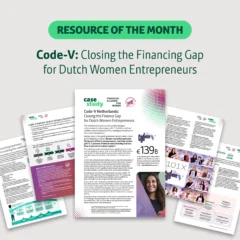Members report strong performance and participation in Alliance educational programs reached all-time highs.
New benchmarks in women customers, savings and loans:
Our latest annual Female Economy Analytics Survey–based on 2024 data from 53 members–reveals strong progress:
Women’s representation as customers continues to grow. Women now make up:
- 46 percent of retail banking customers (vs. 41 percent in 2022)
- 40 percent of high-net-worth customers (vs. 32 percent in 2022)
- 39 percent of micro-enterprises (vs. 32 percent in 2022), and,
- 27 percent of SME customers (vs. 24 percent 2022).
Savings and loan sizes for women are approaching parity with their male counterparts–with striking gains among women-owned/led MSMEs:
- Women micro-entrepreneurs’ average deposit balance climbed to 99 percent of men in 2024 versus 69 percent in 2022.
- For women’s SMEs, average loan size has risen to 88 percent of men’s, compared 76 percent in 2022.
Women borrowers maintain excellent repayment rates as their loan values increase. For the eleventh consecutive year, women’s non-performing loan (NPL) rates remained below men’s across all segments.
Record engagement in Alliance peer learning initiatives:
Participation in our flagship trainings and events reached all-time highs:
- 309 students from 262 institutions in 71 countries enrolled in the WMSME Gender Data Learning Series, awarding the sessions an outstanding 4.6 out of 5 satisfaction rating. Highest completion rates to-date: 65 percent completed the full training, attending all five live trainings and completing their on-your-own learning modules between sessions. Much of the best practices members have contributed to the Learning Series were codified in a new How-To Guide on Collecting and Using Banking Data on Women-Owned Businesses.
- The Primer on the Strategic and Business Case for Serving WMSMEs attracted 350 participants from 190 institutions across 58 countries, earning an average satisfaction score of 4.4 out of 5. An example of how banks can make use of data to create a winning proposition for women entrepreneurs can be found in our recently-published 2025 case study, Banco BHD’s WMSME Data Journey: Building the Foundation for a Winning Women’s Markets Program.
- A capacity crowd from 175 institutions and 47 countries gathered at the 2025 Annual Summit in Kigali to witness the launch of the WE Finance Code Rwanda and engage in peer learning. With an average rating of 4.7 out of 5, it was our most highly rated Summit to date.
Accelerated progress through the WE Finance Code:
The WE Finance Code movement expanded its global footprint substantially in 2025, now active in more than 30 countries. The Alliance facilitated this growth by convening the Community of Champions, which connected 250 WE Finance Code Champions from implementing and yet-to implement countries . Through this initiative, banks, central banks, government agencies, and industry associations are working in concert to close the gender gap in financing for entrepreneurs. This community meets four times per year on-line and once in-person. In 2025 the in-person meeting was held at the Summit venue in Kigali. Over 137 Code Champions from 24 Code adopting countries and 11 countries interested in adopting the Code attended. Ninety three percent of participants reported feeling motivated in their ability to move the WE Finance Code forward as a result of attending the full-day workshop.
The Alliance has been codifying the learnings from Code countries, and this month we are proud to publish a case study on the Netherlands’ Code-V (the Dutch iteration of the WE Finance Code). Since launching in 2023, Code-V has built a broad coalition of 107 financial institutions, government agencies, and NGOs. The first year of reporting established the baseline level of funding to women entrepreneurs at 13.7%; Code-V has set the goal to close this funding gap by 2034 through systematic data collection and targeted investment strategies.
The Alliance has also developed several other resources to support countries in implementing the Code successfully and driving transformative change for women in business: The Collecting and Using Data on Women Businesses: A How To Guide For Financial Institutions WMSMEs, the WE Finance Code Data Mapping Tool, the WMSME Business Case Tool, and the forthcoming Dominican WE Finance Code case study. All are available on the WE Finance Code resources hub.
Looking ahead:
As 2025 draws to a close, our network has proven that deliberate, data-driven approaches to serving Women’s Markets generate meaningful results for women customers and their financial services providers. The achievements of our members, amplified by comprehensive learning programs and multi-stakeholder coalitions, have established a robust platform for scaling women’s financial access around the globe. We look forward to building on this incredible momentum in 2026 and beyond.



